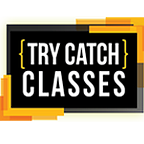What is HTML and CSS ?
What is HTML?
HTML abbreviation for Hyper Text Markup Language, is a Markup Language to put together the structure of a web page. Think of HTML as the skeleton of a webpage. There is no website or webpage on the internet that does not use HTML. Without HTML, the web would not be possible.
What HTML is not
HTML is not a programming language. Please don’t confuse the two concepts. A programming language has logical and computational capability to instruct a computer to do some operations. A markup language, on the other hand, is static and is only used to organize data in a specific structure. HTML in our case is used to give structure to a web page.
What is CSS?
CSS stands for Cascading Style Sheets. Think of it as the skin and clothing for the HTML webpage. CSS is simply a list of style properties that get applied to HTML elements. Just the way clothing is put onto a human body, similarly, CSS styling is applied on HTML elements. CSS enhances the colors, layout, and styling of the HTML webpage, making it look more beautiful and professional.
Why learn HTML and CSS?
Unlike programming languages, HTML and CSS have NO competition. If you want to make web pages, start a career in web design, web development or even web journalism, the basic knowledge of HTML and CSS is a must have.
Fortunately, the foundation of HTML and CSS are not that difficult. You can start getting comfortable with HTML in a matter of hours. Basic CSS is also not that difficult, however, CSS can get complicated when trying to build advanced layouts.
What can you build with HTML and CSS?
Any website layout! Yes, any. All, yes all websites use HTML and CSS, and once you get a hang of it, you can build websites as beautiful as Airbnb, Facebook, Twitter, Amazon (You name it).
Remember one thing! HTML and CSS will only help you build website layouts and static websites. The intelligent aspect of a webpage, such as a login capability, storing information in a database and advanced interactivity is built with a programming language such as JavaScript. Once you are comfortable with HTML and CSS and have built some projects, your next step is to learn JavaScript
you should learn following things
Basic syntax of HTML
Common HTML Elements
Must have markup on every webpage
How to create headline, paragraph and lists
How to create forms elements — text fields, radio/checkbox buttons, select boxes
How to structure a webpage layout
What are semantic elements and why to use them
Basic syntax of CSS
Common CSS properties
CSS selectors and its type
Using CSS to enhance website layout
Importing files in your HTML document
Advanced positioning of elements with CSS
Adding custom fonts
Basic CSS:
Learn about basic pseudo-selectors (:after, :hover, etc.).
Learn about z-index.
Make sure you know the Box Model inside and out, and learn about collapsible margins.
Learn when to use Float and when NOT to use Float.
Bookmark W3Schools and MDN.
Advanced CSS:
Learn about new relational units (viewport units).
Learn about advanced pseudo-selectors (:nth-child, etc).
Learn about using style guides (BEM, OOCSS, and my favorite- SMACSS).
Learn about CSS preprocessors. Most developers use SASS, though you can also explore LESS and Stylus as well.
Explore other CSS3 features such as gradients, transitions, filters, etc.
Learn about Flexbox. This knowledge is must-have, in my opinion.
Learn about Media Queries. The W3C continues to work on this specification, so be sure to keep up with the changes.
Learn about additional tools, such as stylestats, which can help you manage your CSS as your repo scales.
Thank You !
